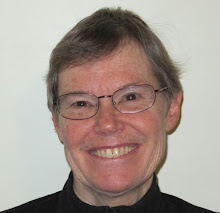 |
| Click on image to enlarge it |
The portrait was made in 1753, when Mary was 15 or 16. (Since her birthdate was December 19, 1737, she would have been only 15 for most of 1753.) She was the only child of Boston shopkeepers, according to a book I'm reading this week:
A Day at a Time: the Diary Literature of American Woman from 1764 to the Present. Edited by Margo Culley. (The Feminist Press at the City University of New York, 1985)Her diary writing began soon after her marriage (November 22, 1759) to Dr. Edward Augustus Holyoke, a prominent physician in Salem, MA. Short excerpts reprinted in the book above document the births and deaths of many of their children. Life in the 18th century was difficult. Dr. Holyoke had already lost his first wife (Judith Pickman) and first-born child in 1756. In September 1760 Mary gave birth a daughter who lived for only 3 years. Her second child, Margaret, survived and lived a long life (1763-1825). But Mary lost other babies in 1765, 1766, 1767 and 1768. Out of 12 births, only three of her children grew to adulthood. I am descended from her eleventh child, Susannah Holyoke (1779-1860).
Recently I have been corresponding with descendants of Mary's ninth child, Judith (1774-1841). They asked me to send a photograph of Mary Vial's portrait. I have had trouble making a clear photo of the framed portrait because the glass protecting it reflects light. I am unwilling to remove it from the frame because of this fragile handwritten note attached to the back of the frame:
 |
| "Mary Vial (Grandmother) Second wife of Edward Augustus Holyoke Her daughter Susanna married Joshua Ward. Their daughter Mary married Andrew Nichols." |
Here is a comparison of my small framed copy and the Holyoke Diaries book:
I have now rediscovered (11/29/15, in a file box in my house) additional information about this portrait. Ten years ago my cousin Janet Derouin sent me photocopies of photographs of several family portraits. On the back of each photograph was the stamp "Robb, Photographer, Salem, Mass." and handwritten notes by "Aunt May" (our great aunt Mary E. Nichols who lived at Pine Knoll). For this portrait Aunt May wrote,
Mary Vial second wife of Edward Augustus Holyoke M.D. ...
Portrait by Greenwood. Owned in 1952 by a great great great granddaughter, Ruth (Preston) Goldsmith in Buffalo, N.Y.I conclude that the real portrait went to New York long ago. What I have inherited is a copy.
Another portrait of Mary Vial was made in 1771, when she was about 33 years old.
 |
| Mrs. Edward A. Holyoke [scanned photocopy of photograph of 1771 portrait] |
 |
| Aunt Mary's notes on verso of photograph |
My cousin Stuart Brewster emailed, "I have been reading Mary Vial Holyoke's section of the Holyoke diaries and found an entry on March 27, 1771: "First sat for my picture." A footnote by the Essex Institute editors in 1911 adds, "A pastel by Benjamin Blythe, now in possession of Andrew Nichols of Danvers, Mass." That pastel portrait hung for years in the Pine Knoll parlor just to the right of the fireplace. (See photo in my previous blog entry, Portraits at Pine Knoll.) As Aunt May noted, her sister Margaret owned it in 1952.
Stuart's daughter Andrea, an artist, has researched the artist Benjamin Blythe and found a wonderful resource that reproduces many portraits attributed to Blythe (also spelled Blyth), including 1771 portraits of both Dr. and Mrs. Edward Augustus Holyoke. See the Dictionary of Pastellists before 1800 by Neil Jeffares: online entry for Benjamin Blyth (Scroll to 3rd page to find Holyokes).
In Mary's diary on March 12, 1771, she wrote, "Doctor Sat for his Picture." The 1911 footnote there adds "Probably the pastel by Benjamin Blythe now in possession of Mrs. Charles S. Osgood of Salem." Where these portraits are today I do not know.


2 comments:
Dear Sandy,
I am wondering if you have had any luck since the original post in finding the portrait--I am working on a book about women in New England in the 18th C and have found Mary Vial Holyoke's diary to be a wonderful source. I am trying to find out what kind of fruit she is holding in the portrait (stem structure is not right for cherries) and without knowing the color, it is impossible to make a firm identification. Any leads you can share would be much appreciated!
Sincerely,
Andrea Pappas
Associate Professor
Art History
Santa Clara University
apappas@scu.edu
I have the original. They are red.
Post a Comment